Trip to Berlin
Reise nach Berlin
by N. Richard Wagner
Copyright © 2006 by N. Richard Wagner, all rights reserved.
Kreuzberg
Kreuzberg is an interesting district (Bezirk) in Berlin, just south of the center of the city. This is where my son John lives and where I found an inexpensive room for myself. The district has a mix of people living there, including lots of foreigners. Recently, parts of Kreuzberg have become a "trendy" place to live.
Viktoriapark in Kreuzberg
First let's look at Viktoria Park, which includes the actual Kreuzberg ("cross mountain") -- the tallest point in Berlin aside from Teufelsberg ("devil's mountain", a pile of rubble from World War II that was later used for spying during the cold war). This park has a long history, including a monument at the top dating from 1821, and a waterfall from near the top to the bottom.
 |
 |
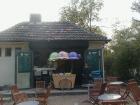 |
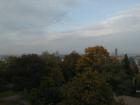 | |||
| Monument | Ice Cream cart | View from top | ||||
|---|---|---|---|---|---|---|
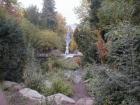 |
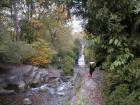 |
 |
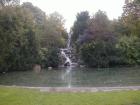 | |||
| Waterfall from top | Waterfall from bottom | |||||
| Viktoria Park | ||||||
Viktoriaquartier
Next I looked at a very fancy and expensive place to live right beside the Viktoria Park, called the Viktoriaquartier. Apartments were created from an old brewery. (The first picture on the left below is a nearby weird apartment building.) See Viktoriaquartier.
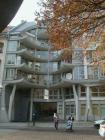 |
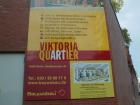 |
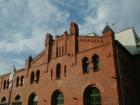 |
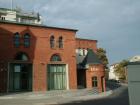 | |||
| Apartment | Notice | Side views | ||||
|---|---|---|---|---|---|---|
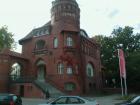 |
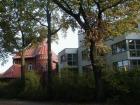 |
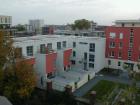 | ||
| Old | Old and new | New | ||
|---|---|---|---|---|
| Viktoriaquartier | ||||
John's Apartment
In typical German fashion, John shares an apartment with five other people, all young and most (university) students. (In German, the word Student means a University student, while the word Schüler is used for students in several versions of our high school and younger students.) Right now John's apartment has 2 men and 4 women, although this fluctuates. There is a bedroom for each person, and a common living/dining room, along with 2 bathrooms.
One of John's roommates had spent a year and a half in New York City and spoke excellent English with an American accent. She had a small sticker on her door that said in English: "Duplication kills creation", a strange slogan, I thought. (Google says that the music group "Youngsters" has this as their motto.)
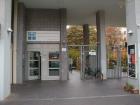 |
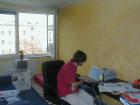 |
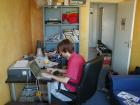 |
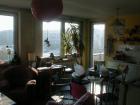 | |||
| Entrance | His Room | Kitchen | ||||
|---|---|---|---|---|---|---|
| John's Apartment | ||||||
Jewish Museum
Berlin has a new "Jewish Museum" which opened in 2001. It was the foremost work of the American Jewish architect Daniel Liebeskind. This architect has been involved in other major works, notably as lead architect for the World Trade Center reconstruction, where due to politics his main contribution has been the 1776 foot height of the horribly ugly "Freedom Tower" -- about as dumb an idea as is likely to come along for some time. Liebeskind is a "post-modern" architect, which often seems to mean making the users of the constructions feel uncomfortable. With his strange Jewish Museum he has succeeded very well in making visitors uncomfortable, and in this setting the idea of disquiet seems to fit with the subject matter.
I had been through the museum once before, but John had not, so I went for a second time. Some of the elements are very effective, especially the "Tower of the Holocaust" and the "Garden of Exile and and Emigration". There is also a powerful tower called the "Memory Void" (not pictured below).
I like the way this museum tells the story of Jews in German throughout their history in the region, without trying to make it something it was not, but telling the real story. The Holocaust itself is, if anything, de-emphasized.
Many facets of the design are symbolic, including the entrance, which is through a separate conventional building, leading underground into the Jewish museum itself.
I personally think that the museum works fairly well. See Jewish Museum web site.
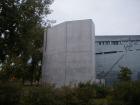 |
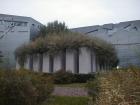 |
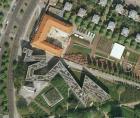 |
 | |||
| Holocaust Tower | Garden of Exile | Aerial Views | ||||
|---|---|---|---|---|---|---|
| Jewish Museum | ||||||
The Story of Berlin
During my visit in 2003 I went to another Berlin museum called The Story of Berlin (they use English for their title). It's located west of the city center, and not in Kreuzberg, but I'm putting it here because of the similarity to the Jewish museum. The subtitle is Die Erlebnisausstellung der Hauptstadt mit original Atomschutzbunker ("The Interactive Exhibition of the Capital City with Original Atom Bomb Bunker"). It has to be seen and is hard to describe. Briefly they present a large number of exhibits, all relating to the history of Berlin. There is a huge amount of writing on the walls, so that it takes a long time to do justice to. Many of the exhibits have interactive features. My favorite was the approach of the Nazi era, which is accompanied with a long staircase descending into the basement. There's quite a bit about the divided Berlin and about the reunified Berlin.
They have a tour of an actual nuclear survival bunker. Our tour guide was delightfully cynical about the bunker, saying that it was there only to give the illusion of security when real security was impossible. People in the bunker could stay up to two weeks. Then they would have to go to the surface, and in case of a true nuclear attack, die two weeks later than they otherwise would have. I highly recommend this as an off-beat feature for anyone visiting Berlin. (The narrative is in German and English.)
My Room in Berlin
I was looking for an inexpensive place to stay in a city with 100+ Euro hotel rooms. I found one hotel for 41 Euros per night, but fortunately I found the Jugend-Gästehaus (Youth Guesthouse) online (the two pictures at the left below). You don't have to be young to stay there, but older people pay a bit more -- in my case about 25 Euros per night, including an excellent breakfast. All rooms are shared, but they weren't busy in late October, so I got a room to myself. This "guesthouse" is also easy to find, since it's right behind the Jewish museum. John was about a 15 minute walk due south. It was close to a U-Bahn station (Hallesches Tor) and in general worked out well for me. See Jugend-Gästehaus.
The two pictures at the right show a large cemetery along Bergmannstrasse near where John lives
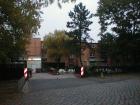 |
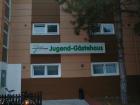 |
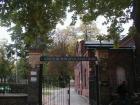 |
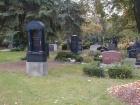 | |||
| Jugend-Gästehaus (where I stayed) | Cemetery in Kreuzberg | |||||
|---|---|---|---|---|---|---|
Street Scenes in Kreuzberg
Here are typical street scenes in Kreuzberg, again near where John lives. I loved the bright multi-colored building.
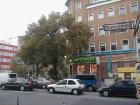 |
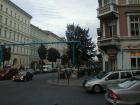 |
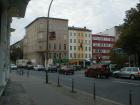 |
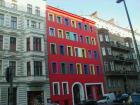 | |||
| Kreuzberg Streets | ||||||
|---|---|---|---|---|---|---|
More scenes from Kreuzberg: a nice courtyard, a small veterinary (die Tierärztin, literally "animal doctor (feminine)") clinic, a church in a traffic circle, and a nice autumn tree.
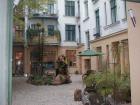 |
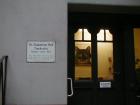 |
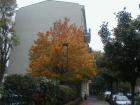 | ||
| Kreuzberg Streets | ||||
|---|---|---|---|---|
Lutheran Church
Here is a beautiful brick Lutheran church that I passed every time I went to or from John's place. It isn't very clear in the pictures, but the back of the church (opposite the entrance) has a weird modern glass tower attached. See Zum-Heiligen-Kreuz Kirche.
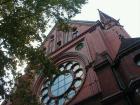 |
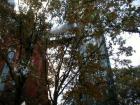 |
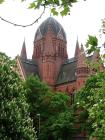 |
 | |||
| Zum-Heiligen-Kreuz (To the Holy Cross) | ||||||
|---|---|---|---|---|---|---|
East Kreuzberg
All but the rightmost picture below show scenes from Ostkreuzberg (East Kreuzberg). During the time before the fall of the East German wall, this area was a part of West Berlin, but it was a sort of dead end, difficult to get into or out of. Partly because of this, it became a poor section, and it remains poor to this day. John pointed out the number of used clothing stores and other indications of poverty compared to the more affluent parts of Kreuzberg.
The rightmost picture is the back of a building that attracted me architecturally, since the building is old, but the courtyard is enclosed with modern glass. From the front I noted down on my map that this is the Deutsche Gesellschaft für Technische Zusammenarbeit (GTZ) (German Society for Technical Cooperative Work). From its website it sounds interesting, but I don't have enough data to decide -- it might be just a capitalist tool. See gtz.
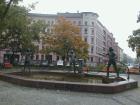 |
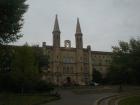 |
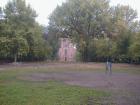 |
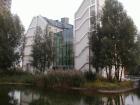 | |||
| Ostkreuzberg East Kreuzberg) | gtz Building | |||||
|---|---|---|---|---|---|---|